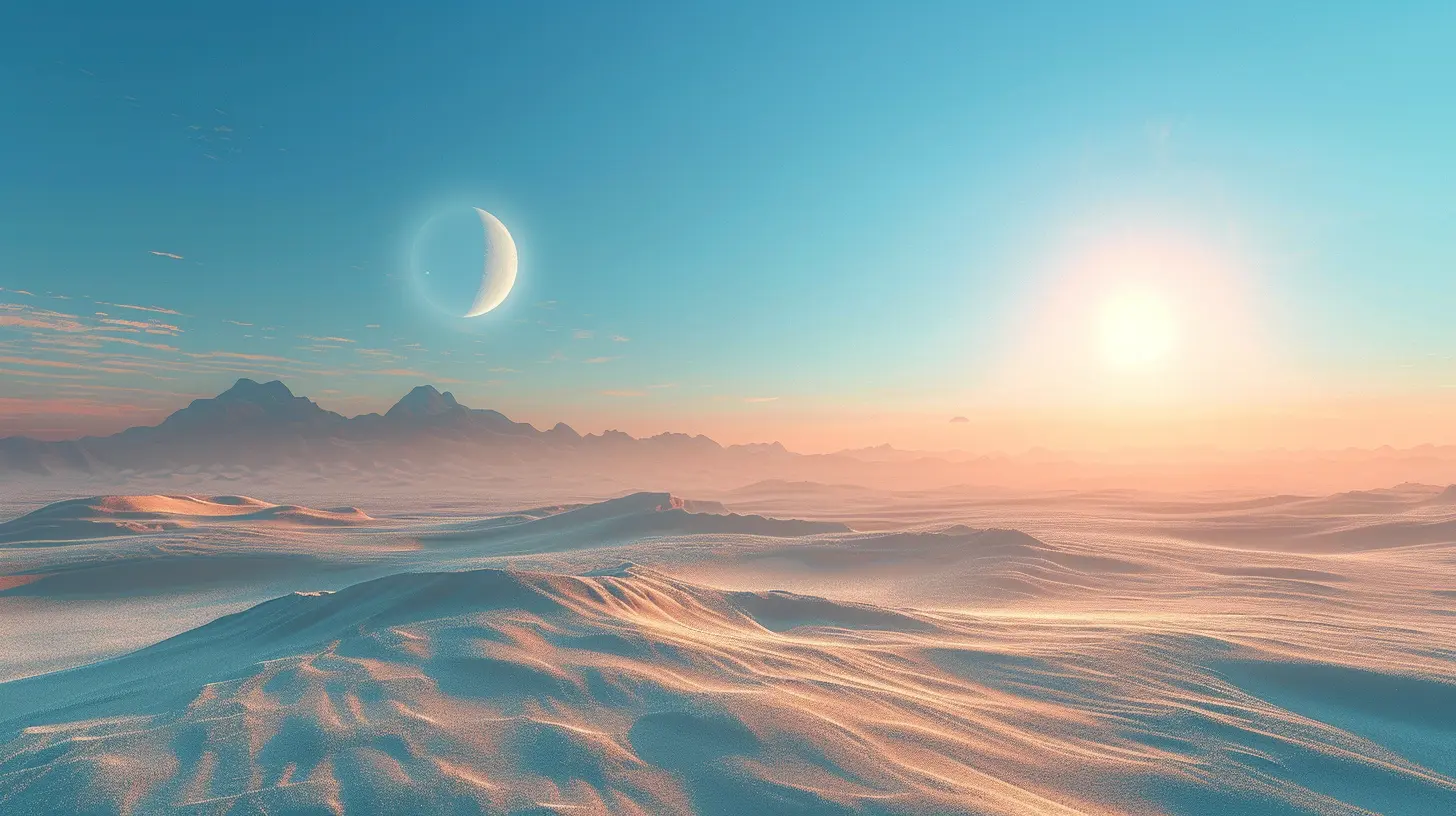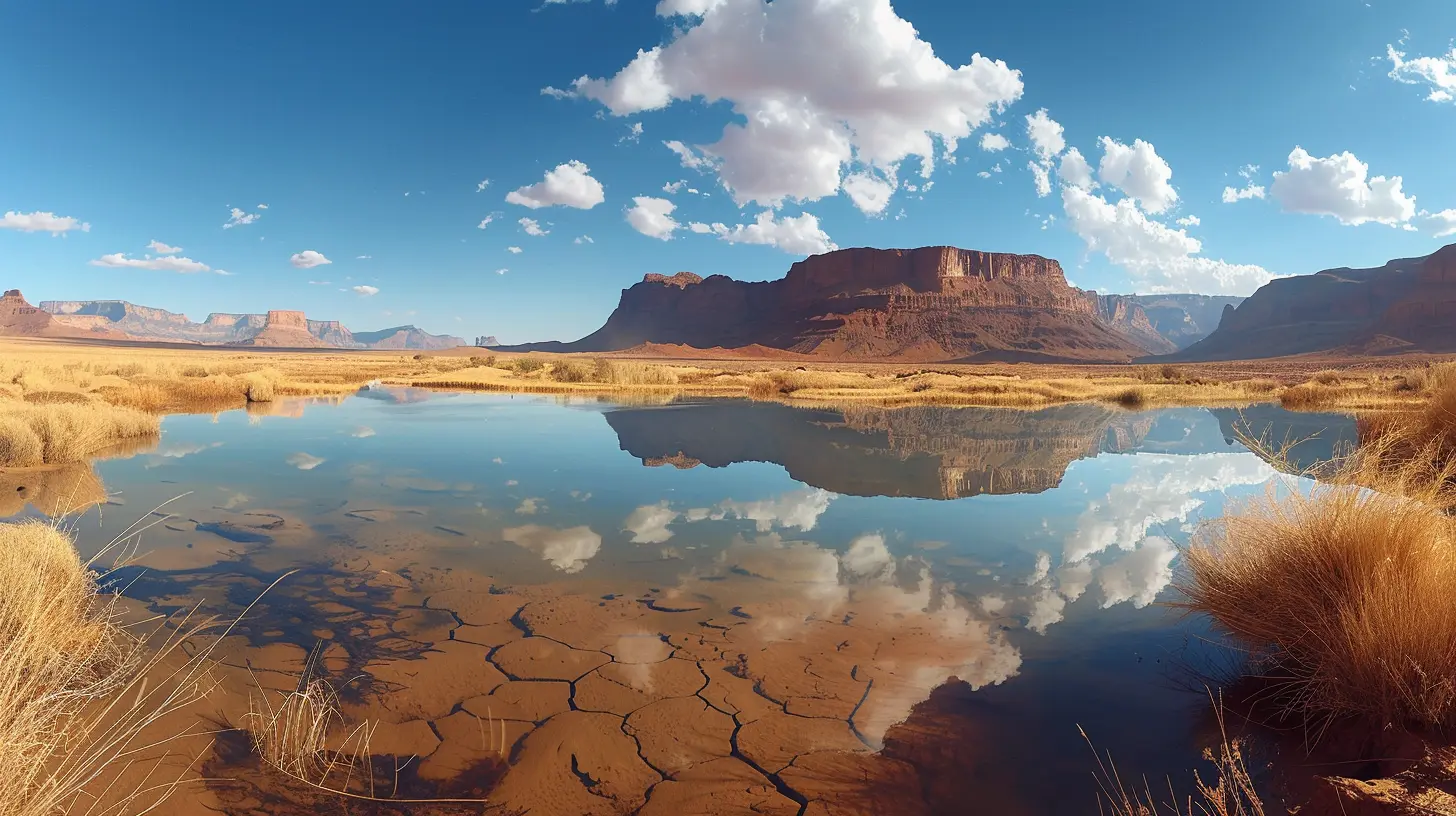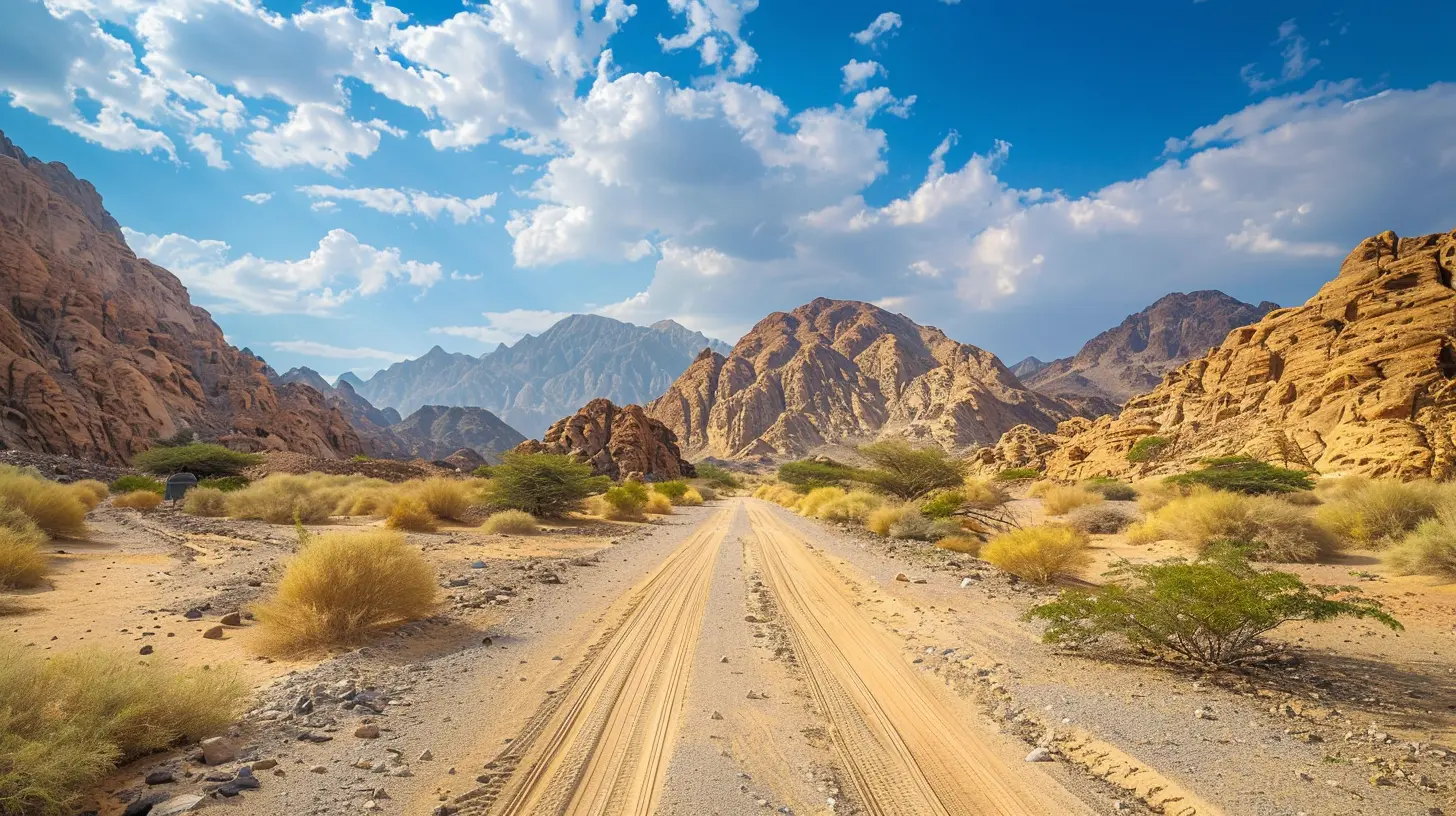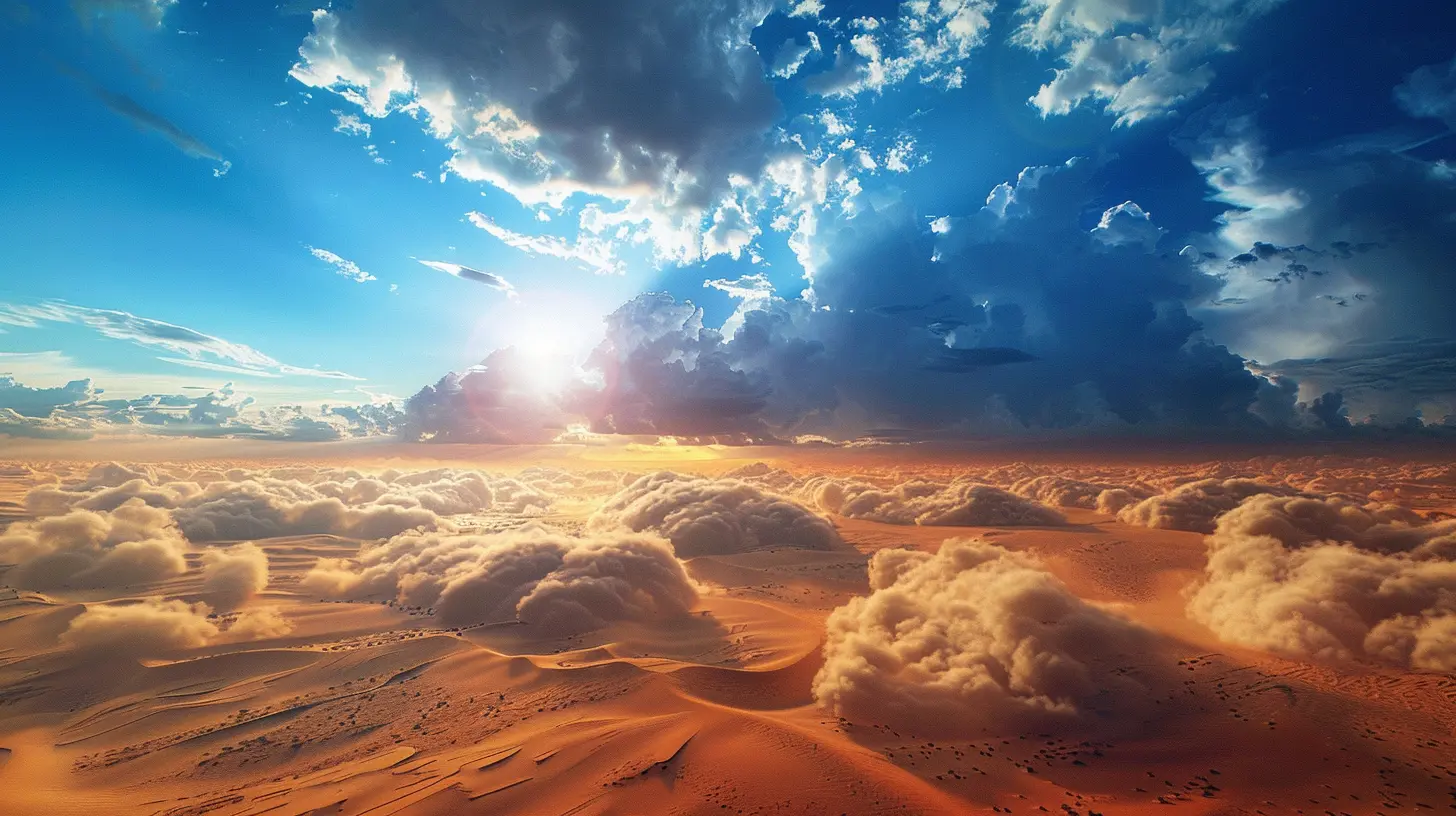Fata Morgana: The Science Behind the Desert Mirage
22 December 2024
Imagine standing in the middle of a vast desert. The sun is beating down, the air is dry, and the heat is nearly unbearable. You're exhausted, but then—you spot it. Amidst the shimmering waves of heat, there’s what looks like an oasis: water, trees, maybe even the outline of a distant city. But as you get closer, poof! The image disappears into thin air. What just happened? Well, you’ve encountered a Fata Morgana, the mysterious mirage that has perplexed travelers for centuries.
In this article, we’re going to dive deep into the world of mirages, exploring the science behind them, particularly the fascinating Fata Morgana phenomenon. So, buckle up—we're about to get into the nitty-gritty of how light, heat, and the atmosphere play tricks on your eyes, creating those mind-bending illusions in the desert.

What Is a Fata Morgana?
First things first—what exactly is a Fata Morgana? In its most simple form, a Fata Morgana is a type of superior mirage. Unlike your basic mirage, which usually makes you see things that aren't there (like a puddle of water on a distant highway), a Fata Morgana is way more complex and dramatic.The name “Fata Morgana” comes from the Italian translation of Morgan le Fay, a powerful sorceress from Arthurian legend. Why? Because just like the sorceress, this optical illusion can be enchanting, deceptive, and downright magical.
But magic has nothing to do with it—it’s pure science. Fata Morgana occurs when layers of air at different temperatures cause light to bend in strange ways, creating distorted and often inverted images beyond the horizon. You might see ships floating in the sky, mountains taller than they should be, or entire cities shimmering in the air.
Mirage vs. Fata Morgana: What's the Difference?
Before we jump into the science, it’s important to note that not all mirages are created equal. The basic mirages you’re familiar with are typically divided into two categories:- Inferior Mirages: These are the ones most people think of when they hear the word mirage. They occur when the ground is hotter than the air above it. You might see what looks like a pool of water floating on the road or desert, but it’s just the sky being reflected on the hot surface.
- Superior Mirages: Fata Morgana falls under this category. Superior mirages occur when cooler air is near the ground while a layer of warmer air sits just above it. This causes light to bend and reflect in unique ways, leading to towering visions of objects that are often far off in the distance or even farther beyond the horizon.

The Science Behind Desert Mirages
Now that we’ve set the stage, let’s dig into the real reason you clicked on this article—the science behind these mind-boggling optical illusions.Temperature Inversion: The Key to Fata Morgana
At the heart of every Fata Morgana is something called a temperature inversion. Usually, in the lower atmosphere, the temperature drops as you go higher. In other words, it’s cooler the higher up you go. But in the case of a temperature inversion, this pattern flips: cooler air sits at the surface, and warmer air rises above it. This temperature inversion causes light rays traveling from distant objects to bend or “refract” as they pass through these air layers.Think of it like a straw in a glass of water. You know how the straw looks bent or broken when you look at it from the side? Same principle here. The light coming from a distant object—like a mountain or a ship on the horizon—gets bent out of shape as it passes through layers of air at different temperatures.
Refraction: Bending the Rules of Reality
The bending of light, or refraction, is what makes Fata Morgana so weird—and so cool. Because the temperature inversion bends light rays downward and upward, they can create layered, distorted images. Basically, your brain expects light to travel in a straight line, but it doesn’t, which results in the illusion of seeing objects that aren’t really where you think they are.In extreme cases, these images can be stretched, flipped upside down, or even duplicated. Ever heard of a ship appearing to float in the air above the horizon? You can thank refraction for that.
Atmospheric Lens: A Natural Optical Trick
Another factor contributing to the illusion is that the atmosphere acts like a lens. As light passes through layers of air with varying density, that air bends and magnifies the image. In the case of Fata Morgana, this "lens" effect can turn a distant object—like a boat or a tree—into a towering, elongated form that may appear several times its actual height.It’s basically like looking at the world through one of those funhouse mirrors at a carnival, where your reflection stretches and shrinks depending on the shape of the mirror.
How Fata Morgana Warps Reality
What you actually see when you witness a Fata Morgana depends on a few factors: the object's original shape, how far away it is, and how strong the temperature inversion is.- Inverted Images: Sometimes, the image gets flipped upside down, creating a strange, topsy-turvy world. A ship may appear to sail upside down in the sky!
- Stacking: The temperature inversion can create multiple layers of the same image. Picture one ship or mountain stacked on top of itself several times, like layers of a cake. Weird but fascinating, right?
- Elongated Shapes: Objects may also appear stretched vertically. A tiny boat might look like a skyscraper drifting on the horizon.

Where Can You Experience a Fata Morgana?
So, where in the world can you witness this wild optical trickery for yourself? While Fata Morgana mirages are most famously associated with scorching deserts like the Sahara, they can actually happen anywhere there’s a large temperature difference between layers of air.Common Fata Morgana Hotspots
1. Deserts: Yes, the Sahara is a prime location, but other hot deserts, like the Mojave or Atacama, are also prime spots. The intense ground heat creates the perfect conditions for temperature inversions.2. Open Seas: Sailors have been mystified by Fata Morgana for centuries, especially in places like the Arctic where the cold surface water and warmer air above create ideal conditions.
3. Lakes and Ice: Believe it or not, you can even see Fata Morgana in cold regions like Antarctica or on the edges of massive frozen lakes. It’s all about those temperature differences!
4. Mountainous Areas: Even high-altitude regions can foster temperature inversions that result in Fata Morgana, making distant mountains appear taller or reappear elsewhere.
In short, if you’re planning a trip to the desert—or anywhere with stark temperature contrasts—keep an eye out. You might just witness one of nature’s coolest (and hottest) optical illusions.

Fata Morgana in Popular Culture and History
Throughout history, Fata Morgana has inspired some pretty incredible myths and legends.The mysterious “floating cities” seen by sailors on the horizon were often considered magical or otherworldly. Vikings, in particular, were known to mistake these illusions for actual distant lands, spurring them on to sail into uncharted waters. It’s also believed that the famous “Flying Dutchman,” a ghost ship said to hover above the waves, was likely a Fata Morgana.
In more modern times, Fata Morgana has even made its way into movies and literature. Filmmakers often use the desert mirage as a symbol for loneliness, desperation, or chasing after elusive dreams. And who could forget those iconic desert mirages in countless adventure films?
How to Photograph a Fata Morgana
Okay, so here’s the million-dollar question for you intrepid explorers and photographers: Can you actually capture a Fata Morgana on film (or, more likely, your smartphone)? You bet!Pro tips for photographing a Fata Morgana:
- Zoom In: Use a telephoto lens or the zoom function on your camera. These mirages happen at great distances, so zooming in will help you capture the bizarre distortions.
- Stay Steady: A tripod can be useful to keep your image sharp, especially if you’re dealing with heat distortion.
- Find the Right Time: Early morning or late afternoon, when temperature gradients are more extreme, will give you the best chance to capture these incredible illusions.
- Focus on the Horizon: Since that’s where these mirages typically occur, make sure you're pointing your camera in the right direction!
Conclusion: A Stunning Collision of Science and Nature
At the end of the day, Fata Morgana is a breathtaking example of how our planet can play tricks on us. While it might feel like you’re stepping into a fantasy world, it’s just the intricate dance between temperature, light, and air—all bound by the laws of physics.So, the next time you’re out in the desert, sailing on the open sea, or standing somewhere with vast horizons, keep an eye out. What looks like a distant mountain or a hovering ship might not be real at all—it could be a Fata Morgana playing with your perception.
Who knows? You might even snap the picture of a lifetime.
all images in this post were generated using AI tools
Category:
Desert AdventuresAuthor:

Pierre McKinney
Discussion
rate this article
12 comments
Lisa Spencer
“Seeing is believing, unless it's mirage.”
February 9, 2025 at 4:20 AM

Pierre McKinney
Absolutely! Fata Morgana illustrates how our perceptions can be deceived by atmospheric conditions. It’s a fascinating phenomenon that blurs the lines between reality and illusion.
Melody Henson
“Chase the mirage, but enjoy the journey ahead!”
January 31, 2025 at 4:17 AM

Pierre McKinney
Thank you! Emphasizing the journey highlights the wonder of discovery in understanding phenomena like fata morgana.
Easton McNulty
What a fascinating exploration of Fata Morgana! Your clear explanation of this enchanting phenomenon makes it accessible to everyone. It’s amazing how science can unveil the beauty of nature. Keep sharing these insights—your passion for the wonders of the world truly shines through!
January 24, 2025 at 4:13 PM

Pierre McKinney
Thank you so much for your kind words! I'm glad you enjoyed the exploration of Fata Morgana and appreciate your support for sharing these wonders of nature.
Nixie Cantu
Fascinating insights on Fata Morgana! Your explanation of the scientific principles behind this stunning desert phenomenon enhances our appreciation for nature’s wonders. Thank you for sharing!
January 20, 2025 at 5:59 AM

Pierre McKinney
Thank you for your kind words! I'm glad you found the insights valuable and appreciate the beauty of Fata Morgana!
Cerys Flores
The article beautifully captures the fascinating interplay between science and illusion in Fata Morgana. However, it could delve deeper into the cultural significance of these mirages in desert folklore, enriching the reader's understanding of their impact beyond mere phenomena.
January 18, 2025 at 4:50 AM

Pierre McKinney
Thank you for your insightful comment! I appreciate your suggestion and will consider exploring the cultural significance of Fata Morgana in future discussions.
Quade Sanchez
Great article! Your explanation of Fata Morgana’s optical phenomena really enhances understanding of these fascinating desert mirages. It would be interesting to include tips for photographers hoping to capture them in action. Keep up the great work!
January 15, 2025 at 4:09 AM

Pierre McKinney
Thank you for your feedback! I appreciate your suggestion and will consider adding photography tips in the future.
Hadley McCarty
What a fascinating exploration of Fata Morgana! It’s amazing how nature's wonders can spark our curiosity and ignite our wanderlust.
January 7, 2025 at 5:47 AM

Pierre McKinney
Thank you! I'm glad you found it intriguing. Nature truly has a way of inspiring our sense of adventure!
Morgan Sullivan
Fascinating insights on natural phenomena!
December 31, 2024 at 4:34 AM

Pierre McKinney
Thank you! I'm glad you found the insights intriguing.
Edith McNaughton
What a fascinating glimpse into Fata Morgana! It’s incredible how science creates such enchanting illusions in the desert. Exploring these natural wonders adds a touch of magic to our travels. Can't wait to see one in person! 🌟🏜️
December 28, 2024 at 4:41 PM

Pierre McKinney
Thank you! I'm glad you found it fascinating. Fata Morgana truly is a magical phenomenon—hope you get to experience it firsthand soon! 🌟
Noemi Mullen
Who needs a magic carpet when you can chase a Fata Morgana? Just remember, the only thing more elusive than that mirage is my sense of direction in the desert!
December 26, 2024 at 5:49 AM

Pierre McKinney
Thanks for the clever comment! It’s true—both the Fata Morgana and a good sense of direction can be hard to pin down in the desert!
Tiffany Ross
Fascinating insight into Fata Morgana! This article beautifully explains the science behind these captivating desert mirages.
December 23, 2024 at 4:06 PM

Pierre McKinney
Thank you! I'm glad you found the article insightful and informative.
Sara Brooks
Fata Morgana isn’t just a visual trick; it’s nature's dazzling display of physics at work! This stunning phenomenon blurs the line between reality and illusion, captivating travelers and scientists alike. Don't just read about it—experience the enchanting allure of the desert mirage firsthand!
December 22, 2024 at 4:27 AM

Pierre McKinney
Thank you for highlighting the captivating nature of Fata Morgana! It truly is a remarkable phenomenon that beautifully illustrates the interplay between light and perception.
MORE POSTS

How to Photograph Your Food in Exotic Destinations

The Land of Fire and Ice: Iceland's Best Adventure Activities
Exploring Iconic World Landmarks Without the Crowds

Airline Miles 101: How to Accumulate and Spend Points Wisely

The Forgotten Wonders of Hampi’s Ancient Kingdom

Roman Ruins and Ravioli: Culinary Walks Through Rome

Master the Art of Packing Cubes and Stay Organized

Island Escapes: Dreamy North American Islands You’ve Never Heard Of